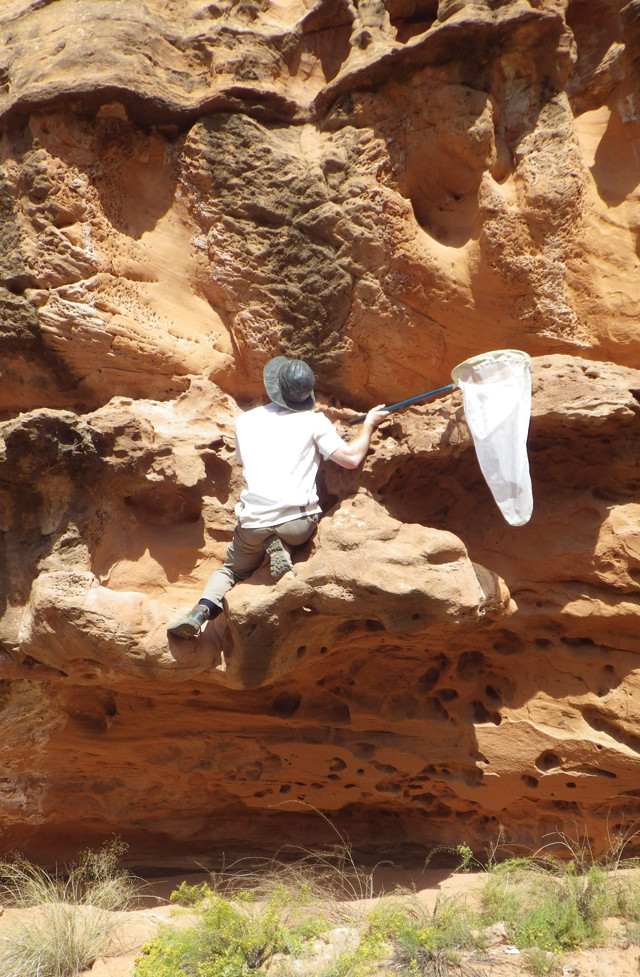
by Kate S. Zalzal Tuesday, December 27, 2016

Michael Orr scales cliffs to investigate sandstone-boring bees. Credit: David Denlinger.
Researchers have discovered five nesting sites of a new species of bee (Anthophora pueblo) that prefers to make its home in sandstone. The newly discovered nests are located in natural formations as well as Ancestral Puebloan sandstone cliff dwellings in the southwestern U.S.
Excavating a nest in sandstone takes more time and energy, and causes mandible wear in the bees, but confers several benefits, according to a new study led by Michael Orr, a Utah State University graduate student. Sandstone nests are structurally stronger, and may allow for tunnel reuse by offspring. Indeed, one of the study sites represents one of the longest-lasting nests ever documented.
“Sandstone is more durable than most other nesting options, and any bees that do not emerge from these nests in a year are better protected,” said Orr, lead author of the study in Current Biology, in a statement. “Delayed emergence is a bet-hedging strategy for avoiding years with poor floral resources — especially useful in the drought-prone desert.”
Nesting in sandstone may also help the bees manage threats like pathogens or parasites. Lower microbe incidence in sandstone nests has been observed, and the hard sandstone makes it more difficult for parasites to usurp the nest.
© 2008-2021. All rights reserved. Any copying, redistribution or retransmission of any of the contents of this service without the expressed written permission of the American Geosciences Institute is expressly prohibited. Click here for all copyright requests.